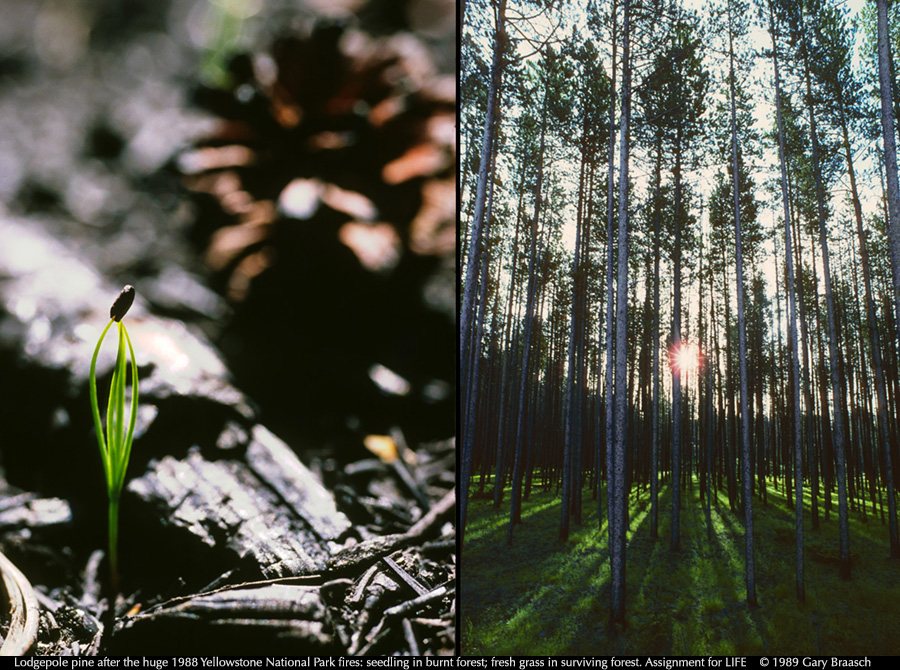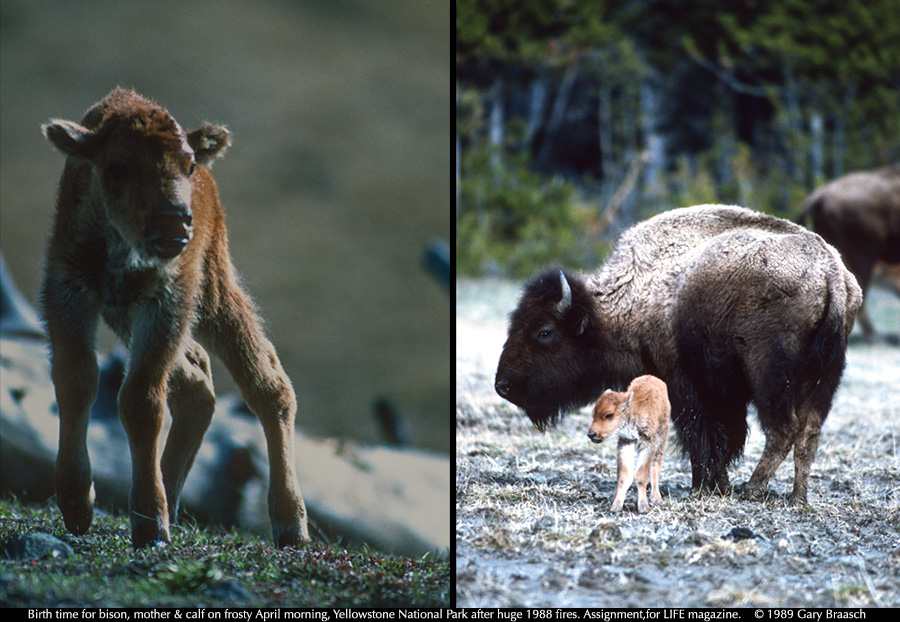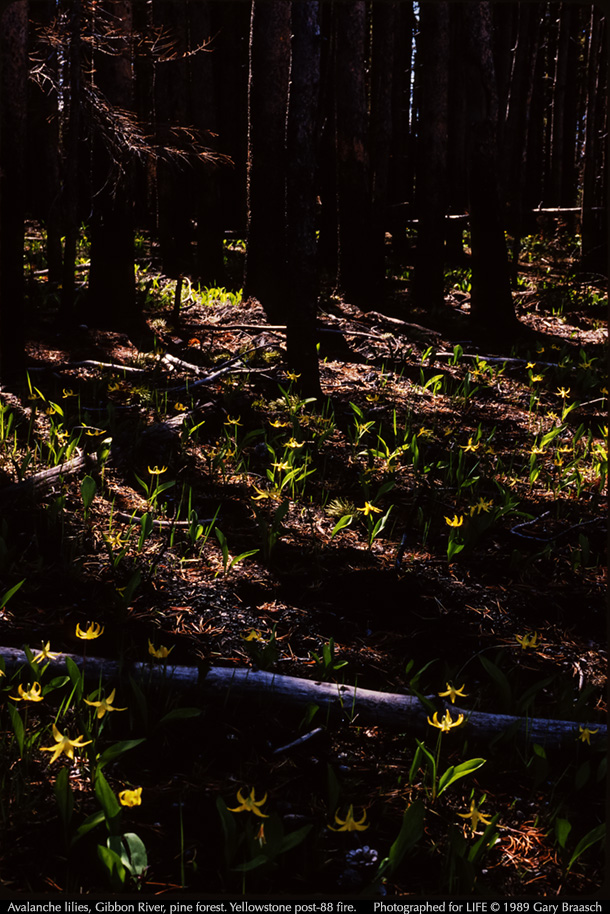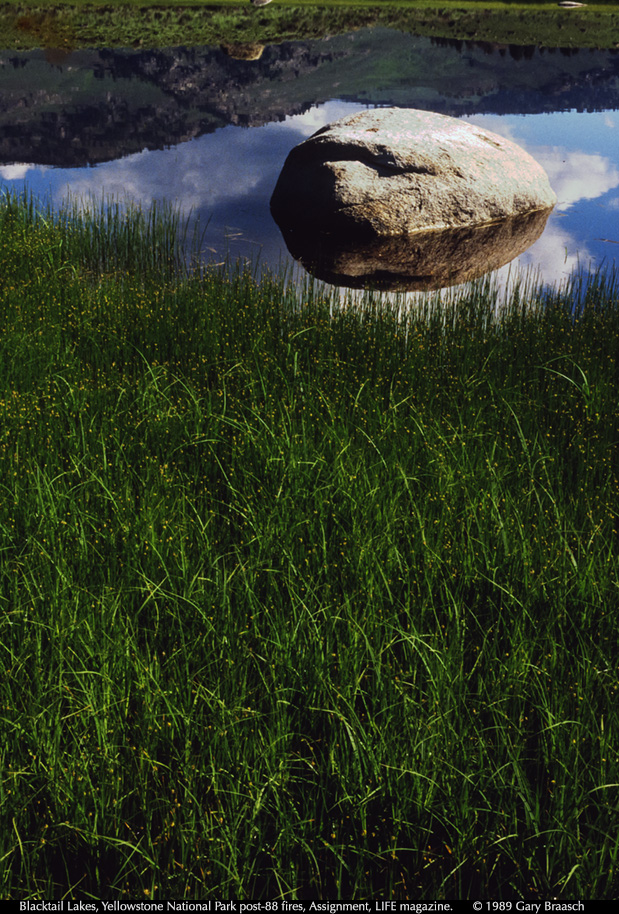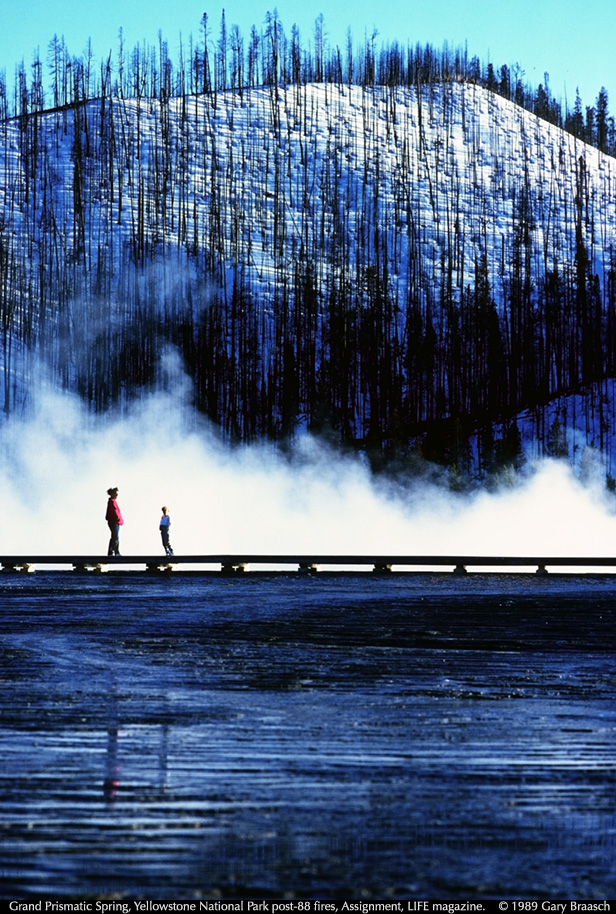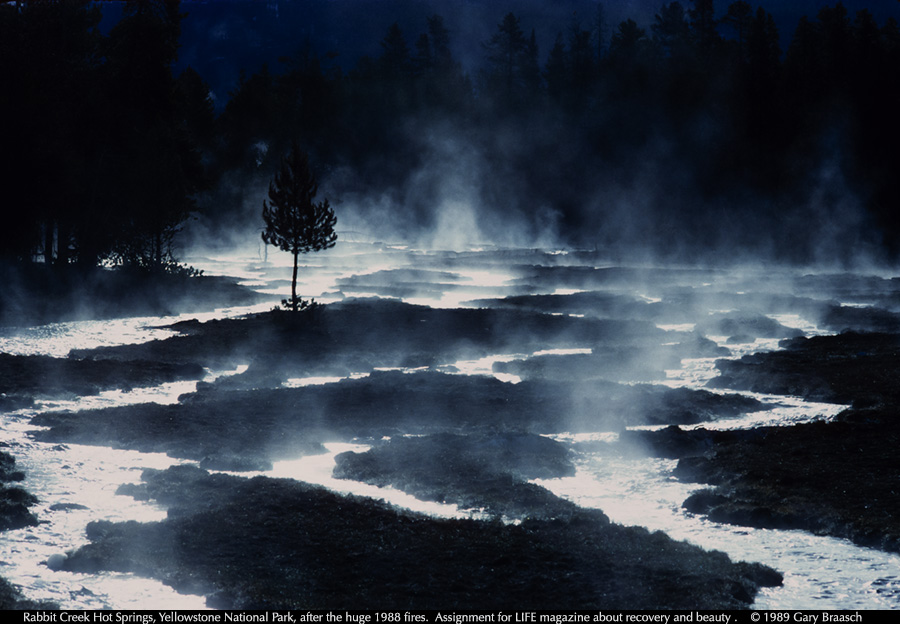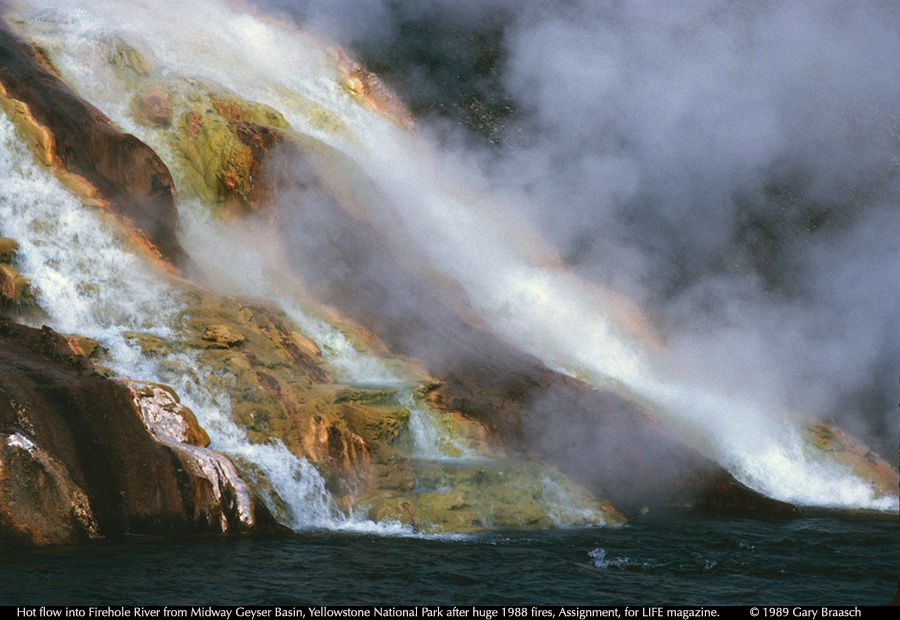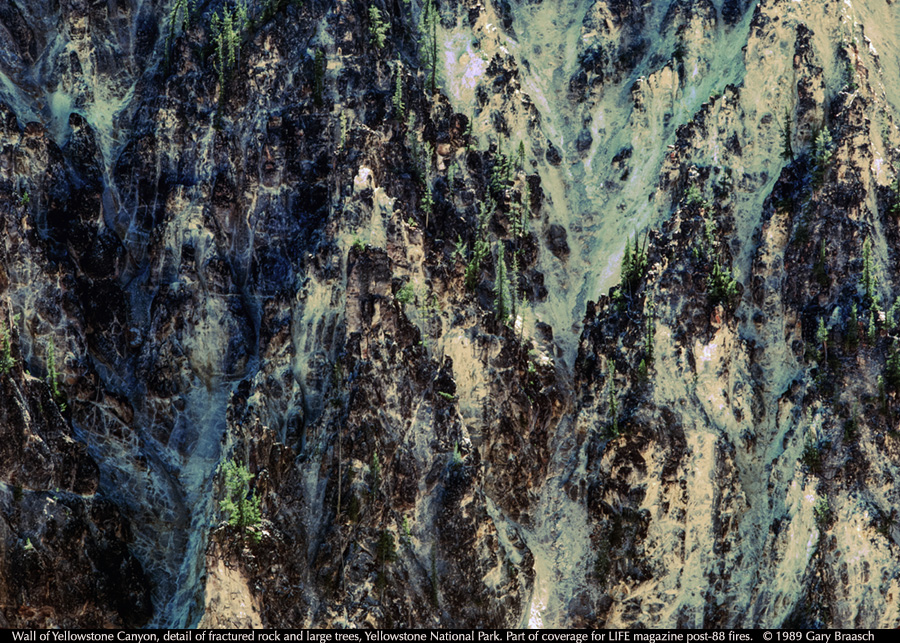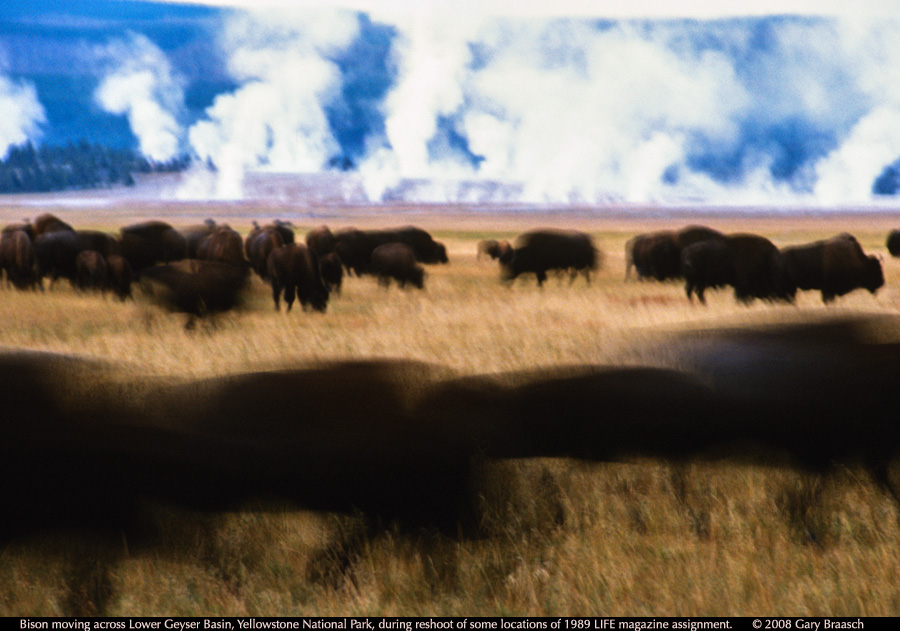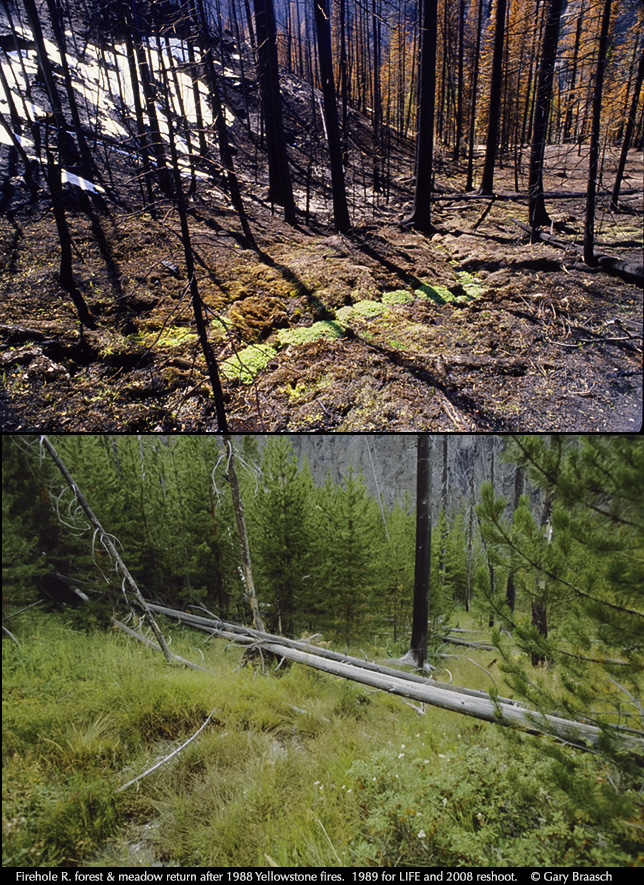Assignment for LIFE Magazine, "Born Again: After the fire Yellowstone springs back to life."
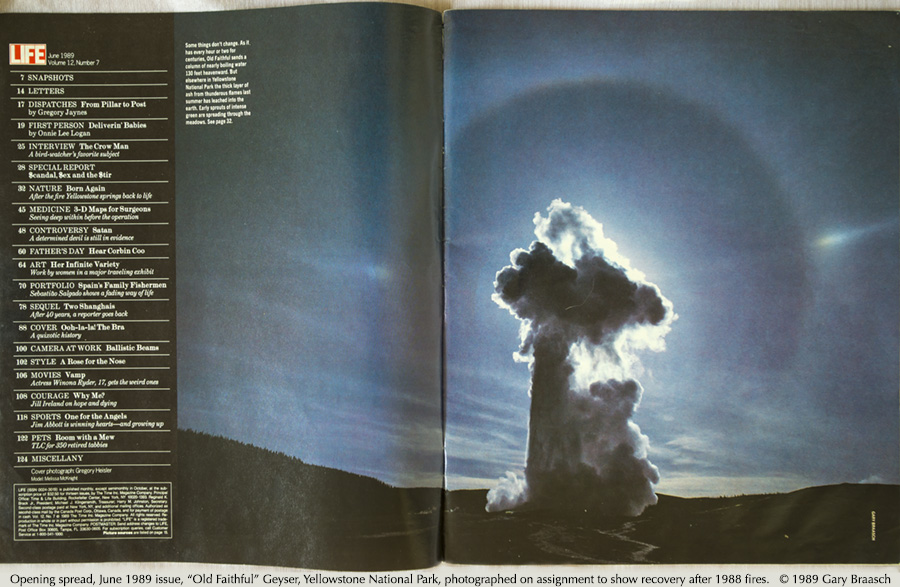
Huge wildfires swept across the American West in 1988. Not only was it a record year for wildfires up to that date, but beloved Yellowstone, our first national park, was in flames -- and a national debate ignited over park and forest management, wilderness fires, and the role of fire in Western forests. Fifty fires burned in Yellowstone and five times that number were ignited by lightning and human actions across the broad Yellowstone Region of Wyoming, Montana and Idaho. At first some of the fires in wilderness parts of the park were allowed to burn, a policy reflecting the importance of fire in most forest ecosystems (some ecologists have called fire as much a requirement for healthy forests as is rain). But by the end of the summer most fires in and around Yellowstone were fought by a total of 25,000 firefighters at a cost of about $120 million. About 36 percent of the park's 2,221,800 acres were burned. Some Americans were shocked at the size of the fires and feared permanent damage to Yellowstone.
The following April, LIFE Director of Photography Peter Howe assigned me to document early spring in the park. It was a continuing story in LIFE's long history of celebrating the National Parks. The editors also wanted a chance to write about the ecology of the park and show the natural renewal that comes into lodgepole forests after heat releases of billions of seeds from the pine cones onto the fertilizing ash, and crowding understory is burned away from the larger trees. I roamed the entire Park, watching for signs of regrowth and also photographing the wildlife, thermal and geologic features which were unscathed by the fires. This 9 page article, including the double page spread on the Table of Contents, was published in June 1989.
1988 was also the summer when global warming burned into public consciousness. Not only was the world average temperature higher that year than it had been before, but in Washington, NASA climatologist James Hansen gave his famous Congressional testimony that “the greenhouse effect has been detected, and it is changing our climate now.” Since then, wildfires in the United States have gotten larger and threaten more suburban homes and country towns, the threat has increased due to rising temperatures and drought, and climate-abetted insect outbreaks have killed huge swaths of the forested West -- including in Yellowstone.
At the bottom of this portfolio is a set of images showing the regrowth of a part of the Firehole River valley, burned in 1988 and featured in LIFE, then rephotographed in 2008.
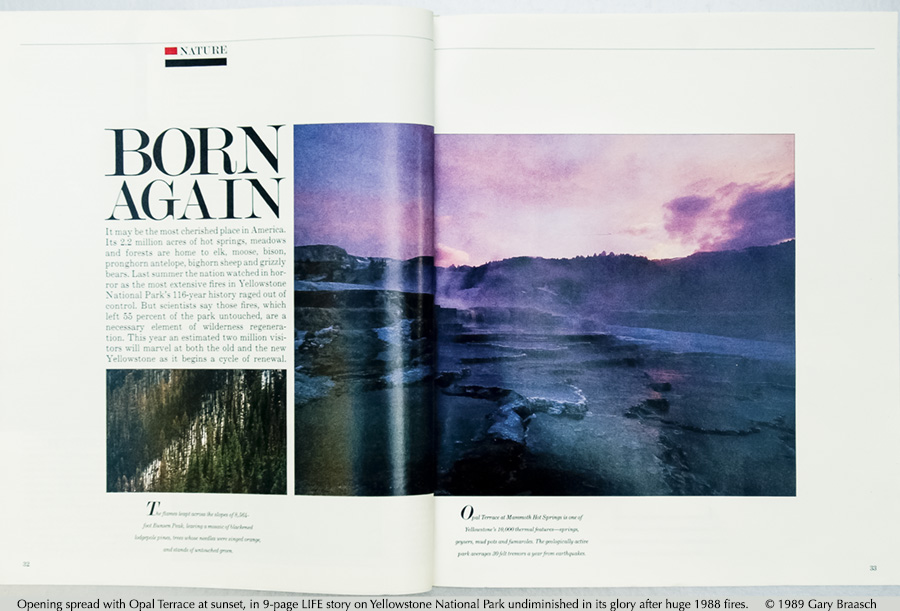
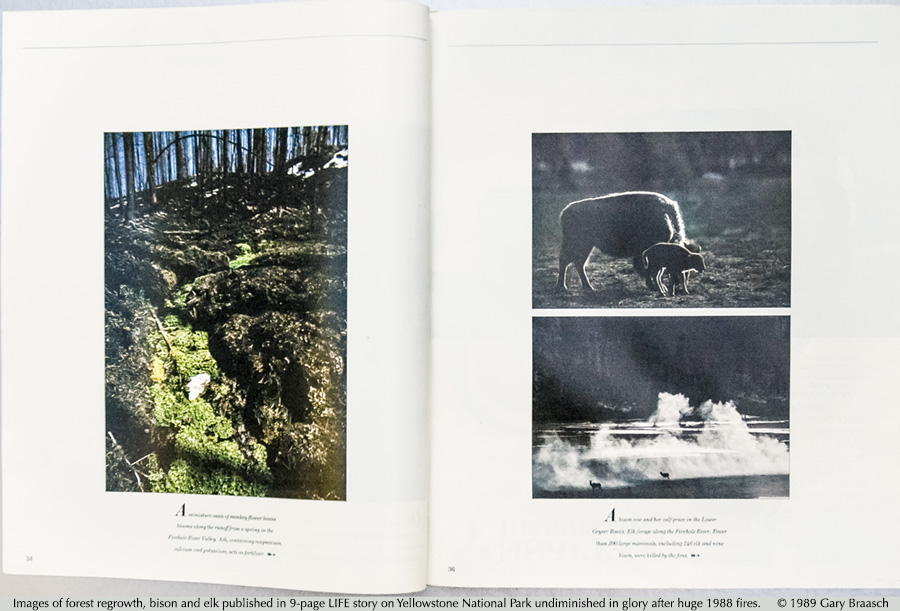
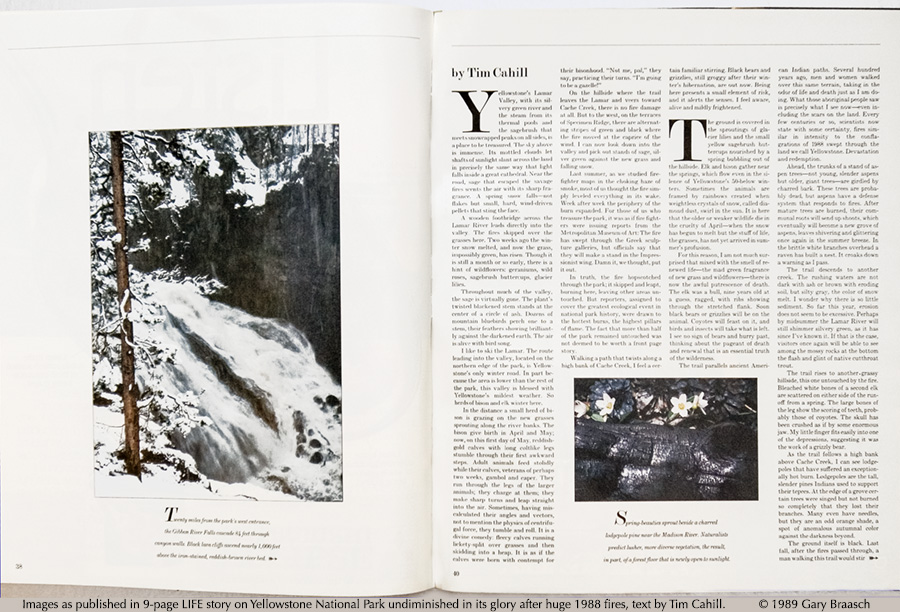
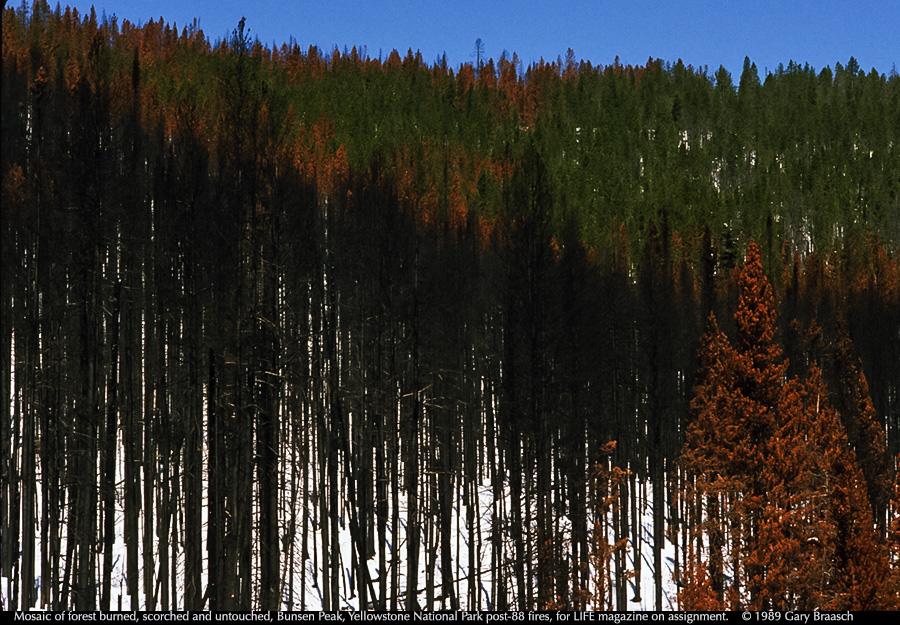
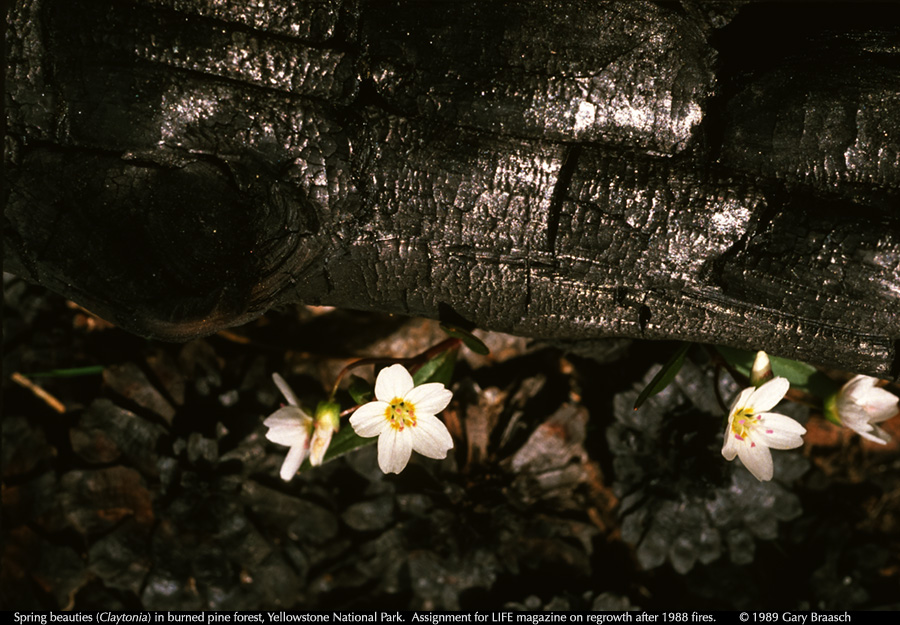 .
.
